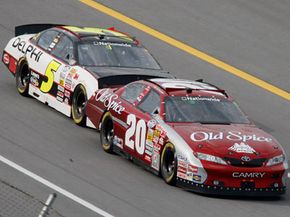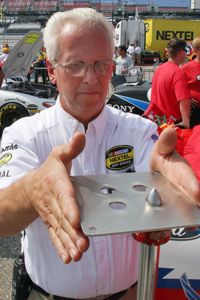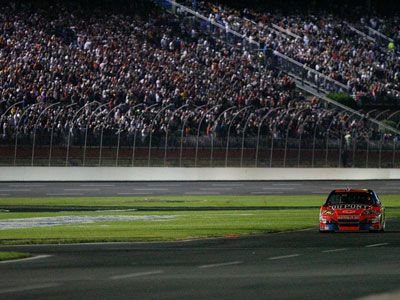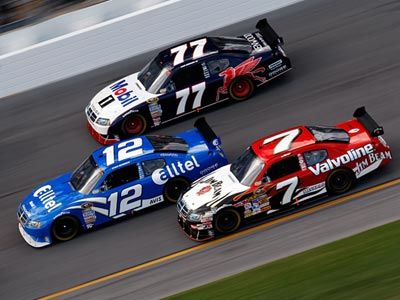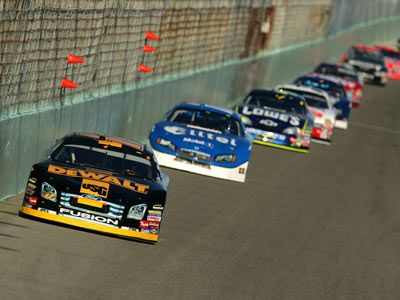If you think you can pilot a NASCAR race car around Alabama's Talladega Superspeedway at 180 miles per hour (290 kilometers per hour) with more than 40 of your closest friends and enemies hot on your tail, you'd better think again. It takes more than a lead foot and nerves of steel. It's all about guts and brains and ability -- and one of the most critical abilities is understanding the draft, or as many drivers put it, "seeing the air."
This quasi-mystic talent is a mixture of hard science and cold mathematical formulas, of tough driver training and the blood-and-bone borne art of becoming one with a car and seeing a race as more than just machines and macadam. Drafting is a game of small numbers and risky strategy playing out in a larger drama. Good drafting can turn a humdrum race into a real humdinger and a bumper-to-bumper slugfest into high-speed chess and produce the kinds of races that are talked about for years afterward.
Advertisement
Like the old adage "it takes two to tango," drafting can only be accomplished with two or more cars. When the lead car rockets down the track it pushes through the air leaving a disturbed, or "dirty," wake behind it. The second car can slip into that disturbed air stream and reap the benefits -- that is, if the driver is talented.
At superspeedways like Alabama's Talladega and Florida's Daytona International, where speed is limited by a restrictor plate rule, long lines of drafting cars take advantage of the car in front to allow greater speeds and better fuel efficiency.
The forces at play around a NASCAR vehicle can be manipulated by a talented and trained driver. Retired NASCAR driver Brett Bodine said drafting was one of a number of factors and strategies employed by a driver during any given race.
"You have to know what your car is going to do at any given point in the race," Bodine said. "That's what we do when we practice; we get up close to the other cars, see what happens to our car and theirs. Some cars are good to draft behind, and some are not."
While drafting is only one element in a large number of factors that contribute to a successful race, using the draft properly can distinguish the subtle difference between a talented driver and a driver that can only be described as "gifted."
On the next page, we'll take a closer look at the complex and subtle science of the art of drafting.
Advertisement
